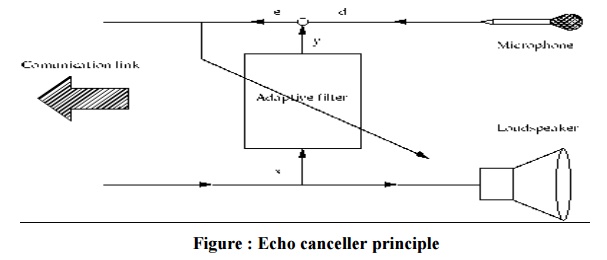Chapter: Digital Signal Processing : Applications of DSP
Echo Cancellation
ECHO CANCELLATION
In the telephone network, the subscribers are connected to telephone exchange by two wire circuit. The exchanges are connected by four wire circuit. The two wire circuit is bidirectional and carries signal in both the directions. The four wire circuit has separate paths for transmission and reception. The hybrid coil at the exchange provides the interface between two wire and four wire circuit which also provides impedance matching between two wire and four wire circuits. Hence there are no echo or reflections on the lines. But this impedance matching is not perfect because it is length dependent. Hence for echo cancellation, DSP techniques are used as follows.

1. An DSP based acoustic echo canceller works in the following fashion: it records the sound going to the loudspeaker and substract it from the signal coming from the microphone. The sound going through the echo-loop is transformed and delayed, and noise is added, which complicate the substraction process.
2. Let * be the input signal going to the loudspeaker; let * be the signal picked up by the microphone, which will be called the desired signal. The signal after substraction will be called the error signal and will be denoted by . The adaptive filter will try to identify the equivalent filter seen by the system from the loudspeaker to the microphone, which is the transfer function of the room the loudpeaker and microphone are in.
Related Topics